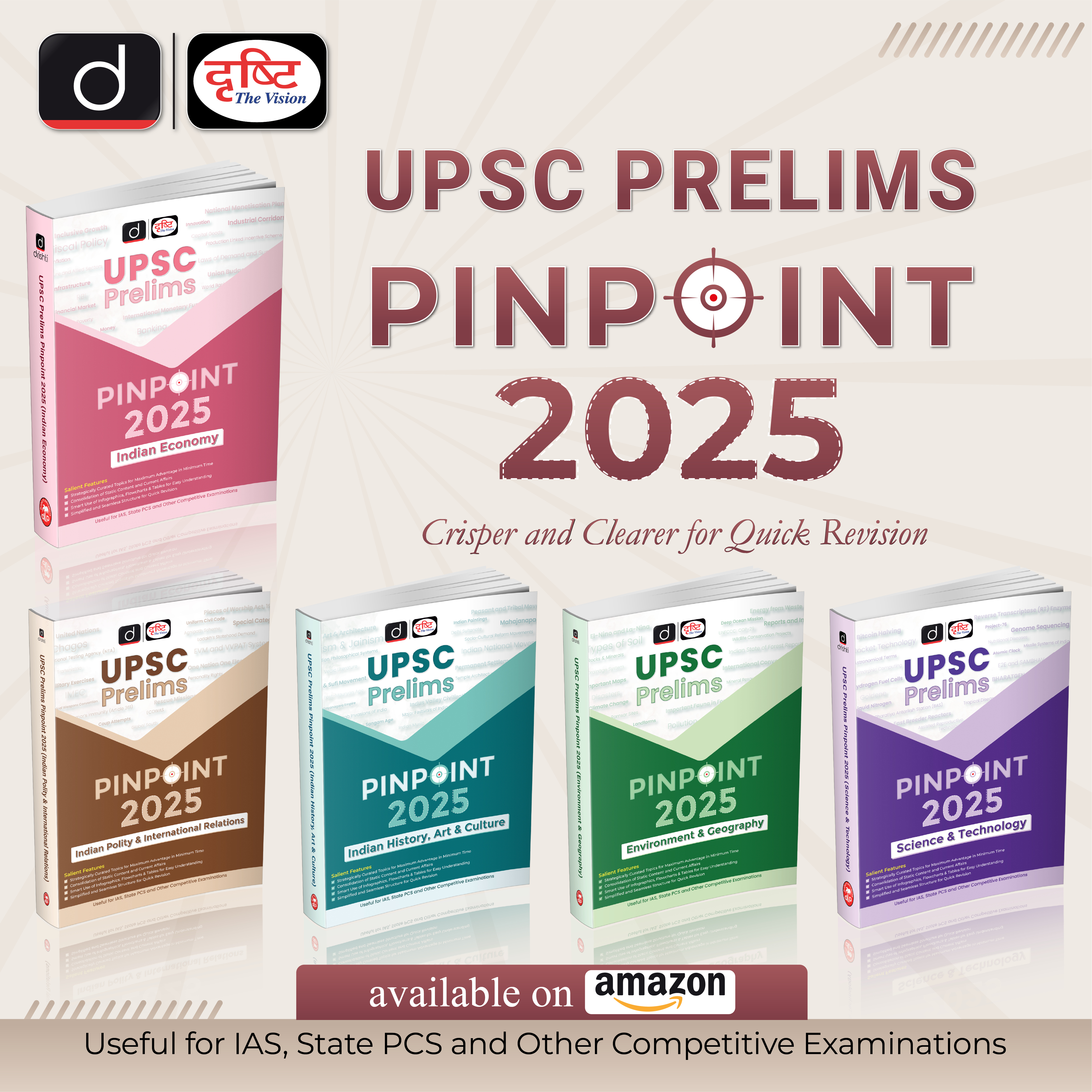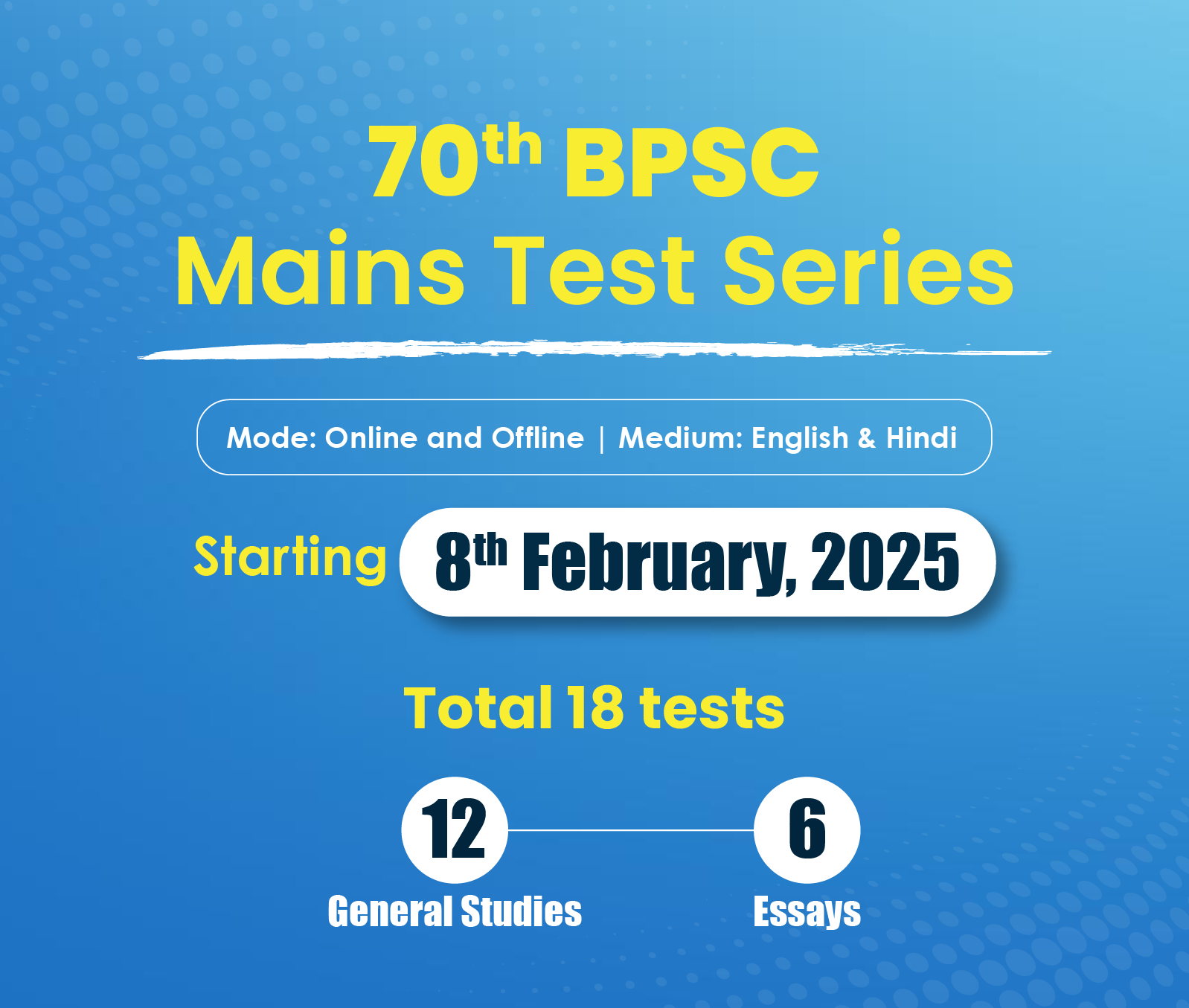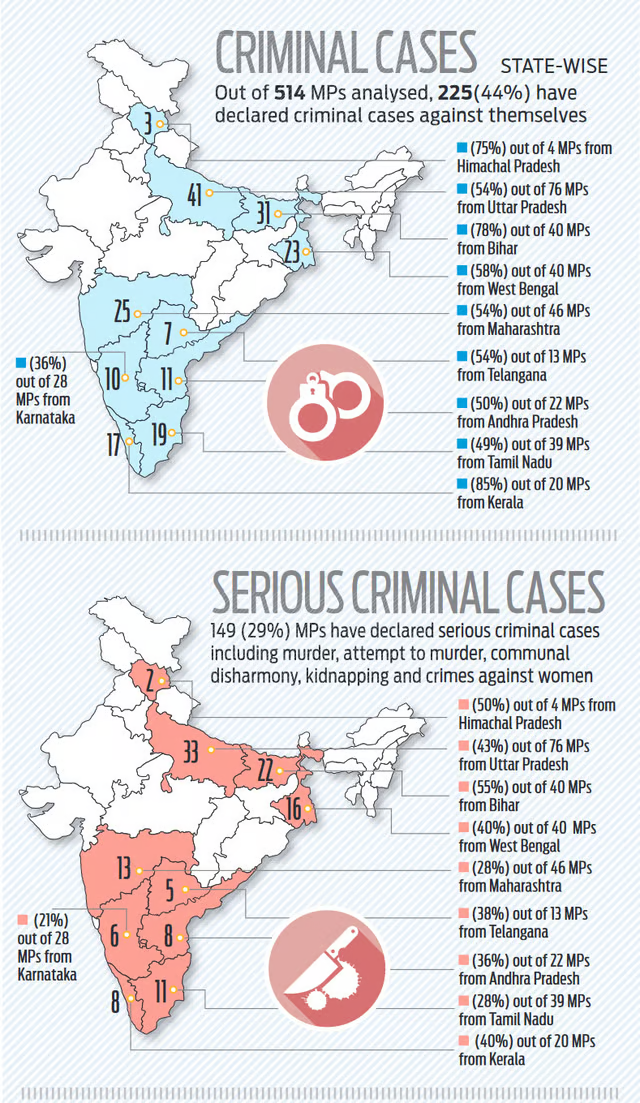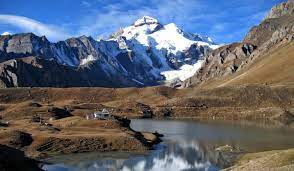Haryana Switch to Hindi
ASI to Remove 18 ‘Untraceable’ Monuments From its List
Why in News?
Recently, the Archaeological Survey of India (ASI) has put out a list of 18 centrally protected monuments which it wants to delist as they no longer hold national importance.
Key Points
- The monuments facing delisting include:
- Kos Minar No.13 at Mujessar village in Haryana
- BaraKhamba Cemetery in Delhi
- Gunner Burkill’s Tomb at Rangoon in Jhansi
- Cemetery at Gaughat in Lucknow
- Telia Nala Buddhist ruins, which form part of a deserted village in Varanasi, Uttar Pradesh.
- Delisting of the monuments effectively means the central agency won’t have any obligation to protect them, and activities related to construction and urbanisation in the area can be carried out in a regular manner.
- According to an official gazette notification, the ASI has invoked Section 35 of the Ancient Monuments and Archaeological Sites and Remains Act, 1958 (AMASR Act) to delist the 18 monuments.
- In 2023, the Ministry of Culture had told Parliament that 50 of India’s 3,693 centrally protected monuments have gone missing.
- This submission was made as part of a report titled ‘Issues relating to Untraceable Monuments and Protection of Monuments in India’ submitted to the Parliamentary Standing Committee on Transport, Tourism and Culture.
- The missing monuments included 11 in Uttar Pradesh, as well as two each in Delhi and Haryana. It also included monuments in Assam, West Bengal, Arunachal Pradesh and Uttarakhand.
- According to the ASI, which is under the Ministry of Culture, 14 of these 50 monuments were lost to rapid urbanisation, 12 submerged by reservoirs or dams, and 24 remain untraceable.
- The move to delist the 18 monuments comes after the parliamentary panel observed that the list of ASI-protected sites includes a large number of “minor monuments” and recommended that it should be “rationalised and categorised” on the basis of their national significance, unique architectural value and specific heritage content.
Ancient Monuments and Archaeological Sites and Remains Act (AMASR Act), 1958
- It is one of the landmark laws for the –
- Preservation of ancient and historical monuments and archaeological sites and remains of national importance (over 100 years old).
- Regulation of archaeological excavations and
- Protection of sculptures, carvings and other like objects.
- ASI functions under the provisions of this act.
- India has a total of 3,693 Centrally Protected Monuments or Sites in the country, under the protection of the ASI.
- The monuments are regularly inspected by the ASI officials to assess their present condition and the necessary conservation and preservation works are taken up as per the requirement.
- Section 35: If the Central Government is of opinion that any ancient and historical monument or archaeological site and remains declared to be of national importance by or under this Act has ceased to be of national importance, it may, by notification in the Official Gazette, declare that the ancient and historical monument or archaeological site and remains, as the case may be, has ceased to be of national importance for the purposes of this Act.
Uttar Pradesh Switch to Hindi
ISARC: Development of Rice with Low Methane Emission
Why in News?
Recently, Senior agriculture officials from India, Bangladesh, Sri Lanka, and Nepal gathered at International Rice Research Institute (IRRI), South Asia Regional Centre (ISARC), Varanasi for the 7th ISARC Coordination Committee (ICC) meeting.
Key Points
- Presiding over the meeting, IRRI interim director general said ISARC is emerging as an evidence-based research hub for all research related to transforming the rice-based agri-food system in the South Asian Region.
- In 2024, the focus is to work on development of rice varieties with low methane emissions and enhancing the productivity of premium quality nutritious rice.
- To achieve the goals, ISARC is working on propagation of best agronomic and management practices such as Dry Seeded Rice (DSR) and Alternate Wet and Drying (AWD).
- DSR, one of the major flagship research programmes of IRRI, delivers faster planting and maturing, conserves scarce resources like water and labor.
- It is more conducive to mechanization and reduces emissions of greenhouse gases that contribute to climate change in comparison to the conventional puddled transplanted rice technique.
- ISARC has showcased its capabilities in research, extension, capacity development, and technology dissemination, bringing tangible solutions to address pressing challenges facing our agricultural landscape.
- A few achievements like release of ultra-low Glycemic Index rice varieties, Speed breeding protocol, Direct Seeded rice and Seeds Without Border, and urged the national partners to replicate the innovations in their respective regions through technical support from ISARC.
International Rice Research Institute (IRRI)
- IRRI is an independent, non-profit, research and educational institute, founded in 1960 by the Ford and Rockefeller Foundations with support from the Philippine government.
- The institute, headquartered in Los Baños, Philippines, has offices in 17 rice-growing countries in Asia and Africa.
- The IRRI South Asia Regional Centre is located at Varanasi (Uttar Pradesh).
- It aims to improve the health and welfare of rice farmers and consumers and protect the rice-growing environment for future generations.
Direct Seeded Rice (DSR)
- It is a viable option to reduce the unproductive water flows.
- DSR refers to the process of establishing a rice crop from seeds sown in the field rather than by transplanting seedlings from the nursery.
- Conventional rice establishment system requires a substantial amount of water.
Alternate Wetting and Drying (AWD)
- It is a water-saving technology that farmers can apply to reduce their irrigation water consumption in rice fields without decreasing its yield.
- In AWD, irrigation water is applied a few days after the disappearance of the ponded water. Hence, the field gets alternately flooded and non-flooded.
Uttar Pradesh Switch to Hindi
44% of Sitting MPs Face Criminal Charges: ADR
Why in News?
According to the self-sworn affidavits analysed by poll rights body Association of Democratic Reforms (ADR), out of the 514 sitting Lok Sabha MPs, 225 (44%) have criminal cases against themselves.
- The report revealed that among the sitting MPs with criminal charges, 29% face serious criminal cases, including allegations of murder, attempt to murder, promoting communal disharmony, kidnapping, and crimes against women.
Key Points
- Regarding the distribution of criminal cases among States, Uttar Pradesh, Maharashtra, Bihar, Andhra Pradesh, Telangana, and Himachal Pradesh stand out with more than 50% of their MPs facing criminal charges.
- Criteria for serious criminal cases:
- Offence for which maximum punishment is of 5 years or more
- If an offence is non-bailable
- If it is an electoral offence (For eg: bribery)
- Offence related to loss to exchequer
- Offences that are related to assault, murder, kidnap or rape
- Offences that are mentioned in Representation of the People Act, 1951 (Section 8)
- Offences under Prevention of Corruption Act, 1988 and crimes against women
- Under Article 105 of the Constitution, MPs enjoy certain privileges so that they can perform their parliamentary duties without let or hindrance.
- One of the privileges is that an MP cannot be arrested in a civil case 40 days before the commencement of the session or a House committee meeting, and 40 days thereafter.
Non-Bailable Offences
- Any offence not mentioned as bailable under the First Schedule of CrPC or any other law is considered as non-bailable offence.
- A person accused of a non-bailable offence cannot claim bail as a right. Section 437 of CrPC provides for when bail may be taken in case of non-bailable offence.
- A person accused of non-bailable offence can be granted bail provided the accused does not fall under the following grounds:
- There are reasonable grounds to believe that he committed an offence punishable with death penalty or life imprisonment.
- That the accused has committed a cognizable offence and he had been previously convicted of an offence punishable with death, imprisonment of seven years or more.
- That the accused had been previously convicted on two or more occasions of commission of a cognizable offence punishable with imprisonment for three years or more but not less than seven years.
- There are exceptional cases in which law gives special consideration in favour of persons i.e., where the accused is a minor, a woman, a sick person etc. by virtue of Section 437(1) of CrPC.
Association for Democratic Reforms (ADR)
- It is an apolitical and non-partisan, non-profit organisation in India, working on electoral and political reforms for over 25 years.
- It was established in 1999 by a group of professors from the Indian Institute of Management (IIM) Ahmedabad.
Uttar Pradesh Switch to Hindi
Appeal Against CAT Order in Contempt Proceedings
Why in News?
Recently, the Allahabad High Court has held that an appeal against an order of the Central Administrative Tribunal while exercising its contempt jurisdiction under Section 17 of the Administrative Tribunals Act 1985 lies before the Supreme Court under Section 19 of the Contempt of Courts Act, 1971.
- The Court held that no such order can be challenged before the High Court under Article 226 of the Constitution of India.
Key Points
- The Central Administrative Tribunal was established under Article 323 - A of the Constitution.
- It provides for adjudication of disputes and complaints with respect to recruitment and conditions of service of persons appointed to public services and posts in connection with the affairs of the Union or other authorities under the control of the Government.
- There are 19 Benches in the CAT all over India.
- The CAT is a specialist body consisting of Administrative Members and Judicial Members who by virtue of their specialized knowledge are better equipped to dispense speedy and effective justice.
- A Chairman who has been a sitting or retired Judge of a High Court heads the CAT.
Article 226 of the Constitution
- Article 226 of the Constitution empowers a high court to issue writs including habeas corpus, mandamus, certiorari, prohibition and quo warranto for the enforcement of the fundamental rights of the citizens and for any other purpose.
- The phrase ‘for any other purpose’ refers to the enforcement of an ordinary legal right. This implies that the writ jurisdiction of the high court is wider than that of the SC.
- This is because the SC can issue writs only for the enforcement of fundamental rights and not for any other purpose, that is, it does not extend to a case where the breach of an ordinary legal right is alleged.
- The phrase ‘for any other purpose’ refers to the enforcement of an ordinary legal right. This implies that the writ jurisdiction of the high court is wider than that of the SC.
- The high court can issue writs to any person, authority and government not only within its territorial jurisdiction but also outside its territorial jurisdiction if the cause of action arises within its territorial jurisdiction.
Uttarakhand Switch to Hindi
Helicopter Service to Uttarakhand's Adi Kailash and Om Parvat Peaks
Why in News?
Recently, a helicopter service was launched to the Adi Kailash and the Om Parvat peaks from the Naini Saini Airport in the Pithoragarh district of Uttarakhand.
Key Points
- Under the Uttarakhand government's Heli Darshan scheme, an Mi-19 helicopter will take pilgrims from the airport to Adi Kailash and Om Parvat in the Vyas Valley region and return after hovering over the peaks.
- The service was launched by Joint Magistrate Ashish Mishra.
Adi Kailash
- Also known as Shiva Kailash, Chota Kailash, Baba Kailash or Jonglingkong Peak, is a mountain located in the Himalayan mountain range in the Pithoragarh district of Uttarakhand.
Uttarakhand Switch to Hindi
Luminous Invests in Solar Module Facility in Uttarakhand
Why in News?
Recently, Luminous Power Technologies inaugurated a 250 MW solar module manufacturing facility in Rudrapur, Uttarakhand.
- Luminous also launched an immersive Experience Center at the plant to showcase its solar ecosystem approach integrating connected energy solutions.
Key Points
- The fully automated 10-acre plant built with an initial investment of Rs 1.2 billion is expandable up to 1 GW capacity.
- The launch marks a strategic shift for Luminous from being just a maker of solar inverters and batteries to now manufacturing solar modules.
- The company also claims to be the only Indian firm that can design and build complete solar power generation systems.
- The facility will produce polycrystalline, monocrystalline, N-type, and TOPCon solar panels with adaptability ranging from 5BB (BusBars) to 16BB configurations for residential, commercial, and agricultural needs.
- The company has partnered with Australia’s University of New South Wales for solar module technology development.
- The launch aligns with the government’s ‘Make in India’ mission and the recently announced ‘PM Surya Ghar: Muft Bijli Yojana’ solar program.
- Originally intended to fully subsidise installation of 1-3 Kilowatt (KW) solar systems in 1 crore households, the scheme now offers up to 60% coverage of costs, with households required to cover the remainder, albeit with accessible loans.
- The scheme envisaged to generate up to 300 units of free electricity every month which would translate to benefits of ₹15,000-18,000 annually for households.
- According to the recently released "State of Solar PV Manufacturing in India 2024" report by Mercom India Research, India added 20.8 GW of solar modules and 3.2 GW of solar cell capacity in the calendar year 2023.








%20MPPCS%202025%20Desktop%20E.jpg)
%20MPPCS%202025%20Mobile%20E%20(1).jpg)










.png)
.png)











 PCS Parikshan
PCS Parikshan



